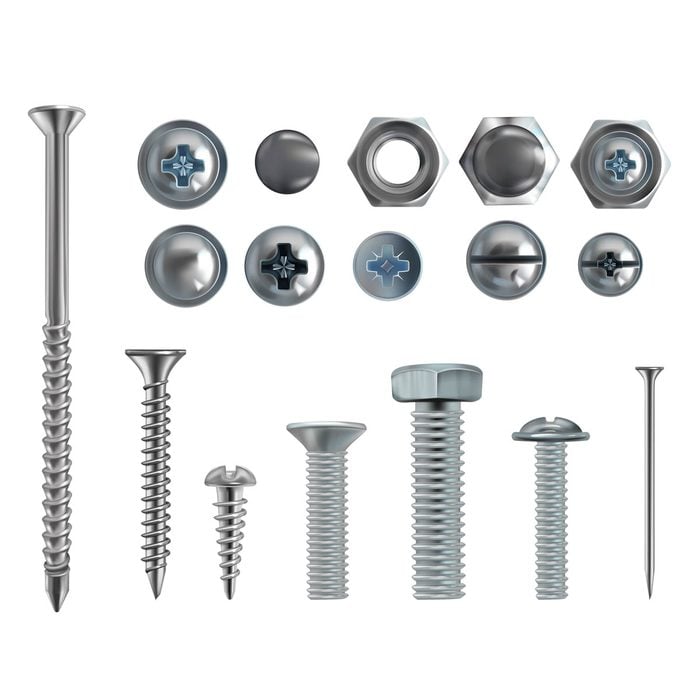
Choosing the Right Types of Screws
Screws are designed with their intended materials in mind. Although it’s possible to use a drywall screw with a piece of wood, that doesn’t always mean it’s the best decision. There are multiple reason why choosing the correct screw is important.
- Protection: Screws are designed to protect the materials they’re joining. Using a screw with the appropriate head, length and thread can keep wood from splitting, drywall from drooping and metal from slipping.
- Ease of use: Fastening materials should not be difficult and that’s why the appropriate screw is important. When used with the correct drill, impact driver, wrench or screwdriver, screws should easily penetrate the appropriate materials.
- Secure hold: Because screws are designed with materials in mind, it’s important to select a screw that will hold materials together. A threaded screw secures differently than a partially threaded screw, and a wood screw won’t provide a secure hold in masonry.
- Safety: Using the right screw for the job will ensure materials hold properly and eliminates risks like corrosion of screw material, split wood, faulty joints and other safety concerns.
Some materials are best suited for decorative fasteners, while others can hold up through outdoor construction. “The most common and the worst mistake beginners make is screw material choice,” says Sean Chapman, a carpenter and founder of Tools’n’Goods. “Every professional and DIYer should learn the basic difference between the materials to avoid quick wear-off and rusting.”
- Steel screws are standard for indoor projects, but not for use on decking or outdoor structures.
- Stainless steel screws are similar to standard steel, but provide a rust-resistant alternative that can be used outdoors.
- Hardened steel screws, AKA construction screws, are used in structural builds and can be purchased in coated versions for outdoor use.
- Brass screws are great for door hinges and cup hooks. They’re visually appealing but soft. While you’re at it, understand the difference between screws and bolts.
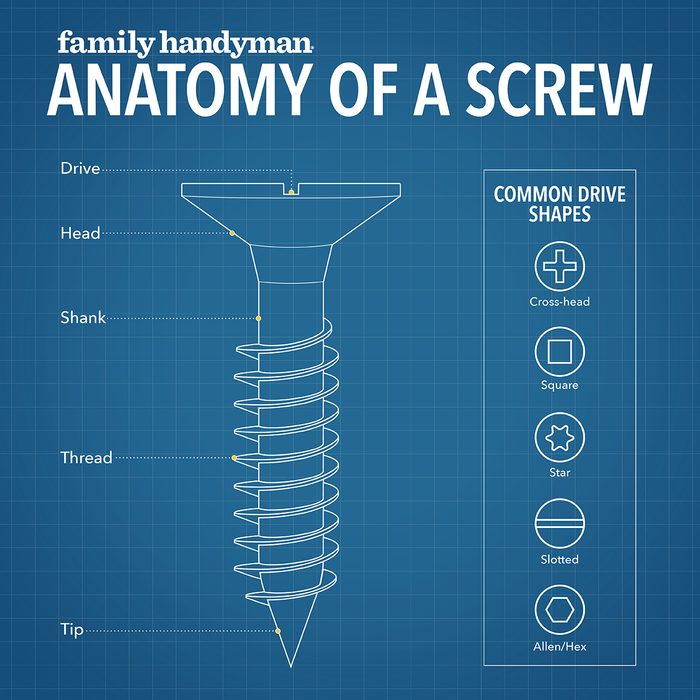
Anatomy of a Screw
Before we dive in to the types, get to know screw features to help you make the best decision.
-
Drive: The shape of the mechanism used to install and remove screws. Some of the most common drive shapes are cross-head, square, star, slotted and hex socket.
-
Head: The top of the screw, which includes the drive.
-
Shank: The smooth area of the fastener between the head and the thread. Screw types vary and some screws do not have a smooth shank.
-
Thread: The ridge that wraps around the cylinder and forms a helix.
-
Tip: The end of the screw.
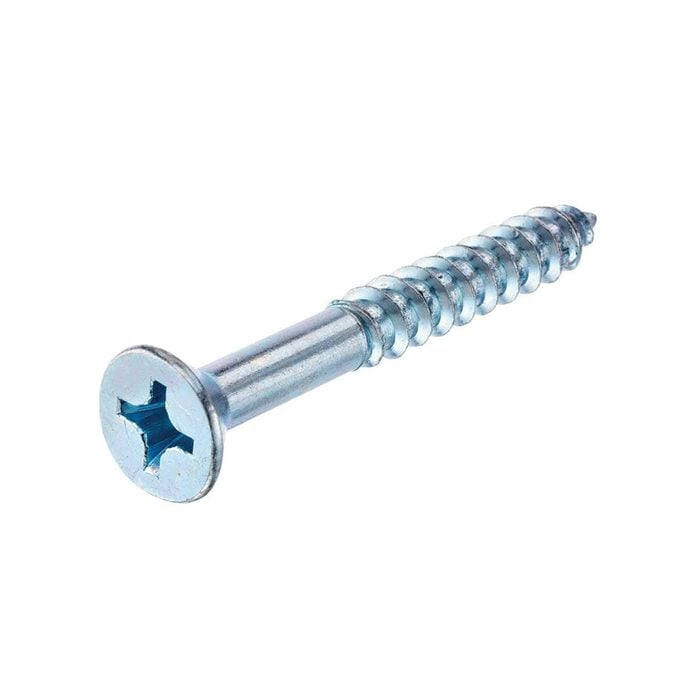
Wood Screws
Wood screws, popular with DIYers, join two wood pieces together. “If you need screws that work well for woodworking, you need sharp models with a wedge-shaped shank,” Chapman says.
Wood screws have a semi-threaded shank and are available in various of lengths, sizes and drive types. #8 screws are standard and work well for most wood projects. Select a screw with a length that will penetrate half the thickness of the bottom material when fastening wood.
A great choice for a standard wood screw is the Hillman #8 x 1-1/4-in. Silver Zinc-Plated Flat Interior Wood Screw. This is a good size for joining 1x2s and works great for interior woodworking projects.
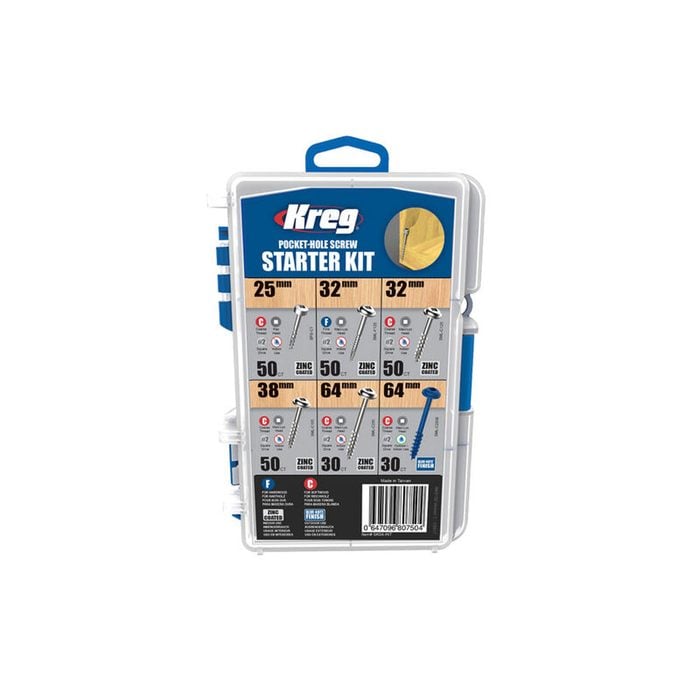
Pocket Hole Screws
Pocket hole screws fasten wood together in a pre-drilled pocket hole. Pocket holes are typically used when building furniture and cabinets because they can be hidden. When used with a pocket hole jig, they provide one of the most secure ways to join materials. The screw has a self-tapping tip that drills its own hole, so there’s no need to drill pilot holes before joining two pieces of material.
The square drive of this screw securely fits a driver (drill bit or screwdriver) and eliminates stripping, even with a fast spinning drill. Due to its square shape the driver is unlikely to slip out of the recessed head of the screw. Because pocket screws are hidden inside of pre-drilled pocket holes, it’s important for them to be strip-proof, because it’s difficult to retrieve a stripped screw from inside a pocket hole.
The flat, washer-style head provides a cushion on the wood. It’s designed to avoid over-drilling and countersinking in soft materials
The Kreg pocket hole screw starter kit includes various types of pocket screws for multiple applications.
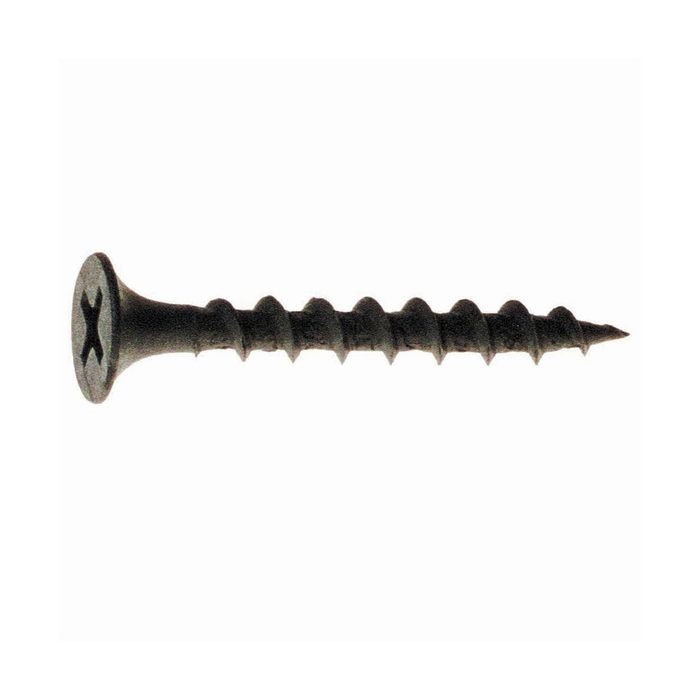
Drywall Screws
Drywall screws join drywall directly to wood or metal studs. They feature a coarse thread and flat tip that make the screws easier to countersink just below the surface of the drywall. That makes it easy to conceal the screw when finishing the drywall. Drywall screws provide a stronger hold than a drywall nail.
Purchase 1-1/4-in. #6 drywall screws when attaching standard 1/2-inch-thick drywall to wood studs. Use 1-5/8-in. screws when attaching standard 5/8-inch-thick drywall to ceilings studs. These screw lengths ensure the screw drives completely through the drywall and into at least half the thickness of a standard stud to provide a secure hold.
Grip-Rite’s drywall screws are best sellers. They come in 1-1/4-in. and 1-5/8-in. lengths.
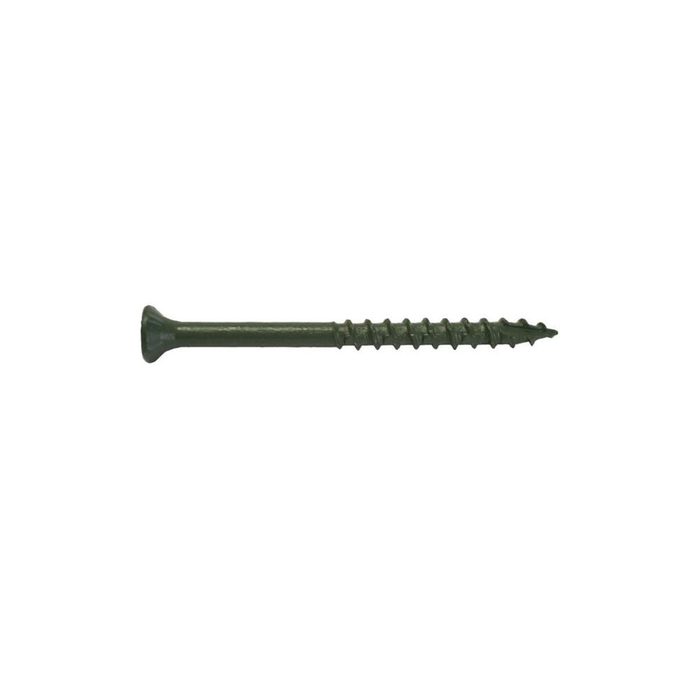
Deck Screws
Deck screws, for outdoor use, are generally made from stainless steel to resist corrosion. They’re also good for building outdoor furniture, planters and window boxes.
Look for a deck screw with a star head to minimize the risk of stripping the screw. They do this because they can handle a high level of torque transfer, the force and speed produced by a powerful drill.
The Deckmate star flat-head wood deck screw works well with standard deck boards. It features a star drive head and corrosion resistant finish. Each one-pound box includes a star drill bit.
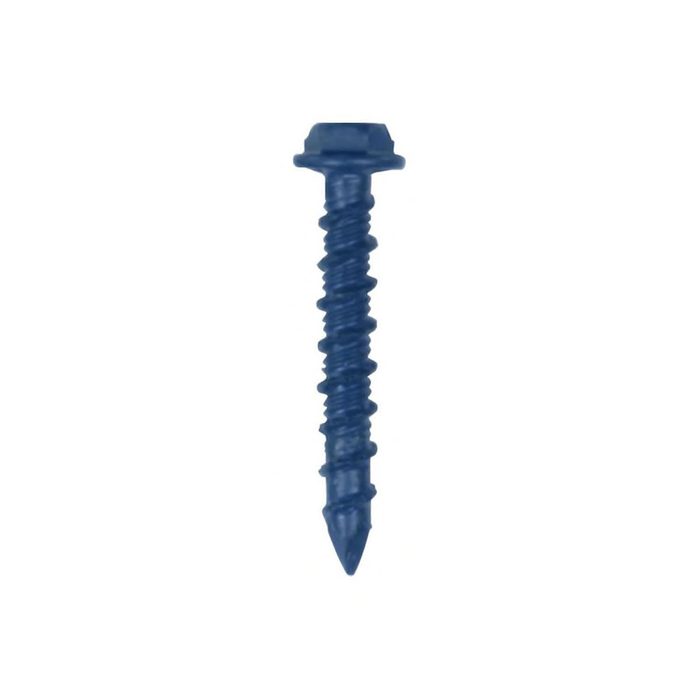
Masonry Screws
Masonry screws are used when fastening materials to concrete, mortar joints and brick. A pilot hole (a small hole pre-drilled into the material) must be created using a carbide bit and a hammer drill before inserting a masonry screw. Masonry screws come in two common head types: a flat head for countersinking, or a hex washer head to sit on top of the surface of the material.
These Tapcon 1-1/4-in. x 3/16-in, concrete anchors work well for attaching items like flag poles and hose reels to masonry-based material. This product also includes the appropriate-size drill bit for the pilot hole.
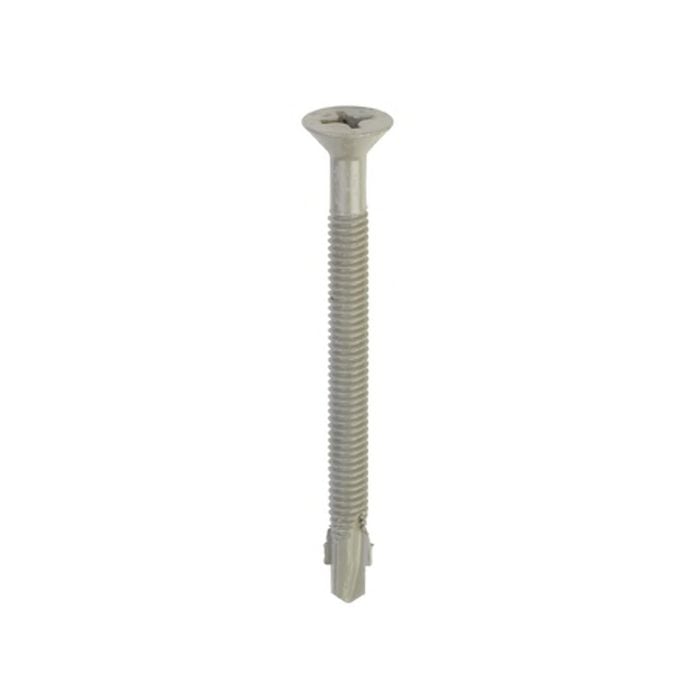
Sheet Metal Screws
Due to its hardness, metal requires special fasteners. Sheet metal screws secure and tighten metal items to each other, or to fasten items like plastic or wood to metal. These screws have sharp tips and include a fine thread along the shank.
The Teks #12 x 2-3/4-in. Phillips-drive sheet metal screws are a good choice for securing wood to metal. They feature a cross-head drive and a self-drilling tip for easy drilling and fastening.
